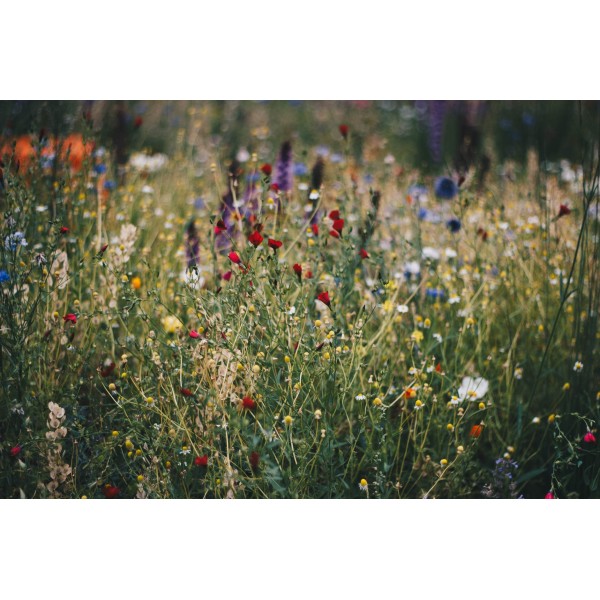In summer months gone-by, we all enjoyed lazy-days in the garden, surrounded by freshly cut grass and an array of brightly coloured flowers. At this moment in time, many people now wish to break free from the confines of their own gardens and seek time off-grid. In truth, the most favourable garden flowers also require a great deal of time and care. Wildflowers can be a fantastic solution to keeping your garden looking vibrant, whilst also keeping down costs and improving the environment.

Featured above, Gatekeeper Butterfly.
In my street, sits a beautifully tailored house complete with vibrant hanging baskets and I noticed that they had let the grass central border to their entrance driveway ‘go-wild’ with ox-eye daisies, poppies, dog-roses, cow-slips, cornflowers, weeds and wild-marjoram, with a clean-mower line giving a nod to their deliberate intentions. Their reward – a host of Gatekeepers, and wild honey-bees. Wildflowers help the environment in a variety of interesting ways. As pollinator plants, wildflowers help to support declining bee populations which are desperately needed by our ecosystem. This is unlike many popular cultivated plants which often have defective pollen or nectar-producing organs.
Interestingly, flowers with multiple petals are said to block pollinator entry to the insects. This means the flower is less likely to be able to reproduce and thrive. However, planting wildflowers allows you to create an eco-friendly area that will attract pollinators, such as bees, butterflies and other insects, which will help to improve the health of your garden and keep it looking fresh.
As its English names suggest, the Gatekeeper, also known as the Hedge Brown, is often encountered in active swarms darting around clumps of flowers growing in gateways, unkempt hedgerows and field edges. Their orange wings with a thick brown border and oval black patch with two white spots inside it on its forewings, are a joy not lost by Moorcroft designer, Vicky Lovatt. Flashes of white, key-shaped dots appear on the hindwings to unlock the beauty of late summer. The Gatekeeper Butterfly design holds a Moorcroft glaze kaleidoscope which harks back to a bygone time before pesticides and horticultural manipulation.
“We carried cut hay from the heart of the rick, packed tight as tobacco flake, with grass and wild flowers juicily fossilized within – a whole summer embalmed in our arms.”
― Laurie Lee, Cider with Rosie
In this rare Moorcroft design, overly-refined florals disappear into coarser, seedier verdure, where the Gatekeeper is able to thrive. Set apart from the more flamboyant butterflies, these rusty-brown species make themselves a home in the shadows, places untouched by pesticides and oppressive treatment. For Moorcroft designer, Vicky Lovatt, they represent a welcome return to the wild as people break-free from the confines of their designated establishments, to ramble along ancient pilgrim paths amidst swathes of wild flowering beauties.
By Catherine Gage
